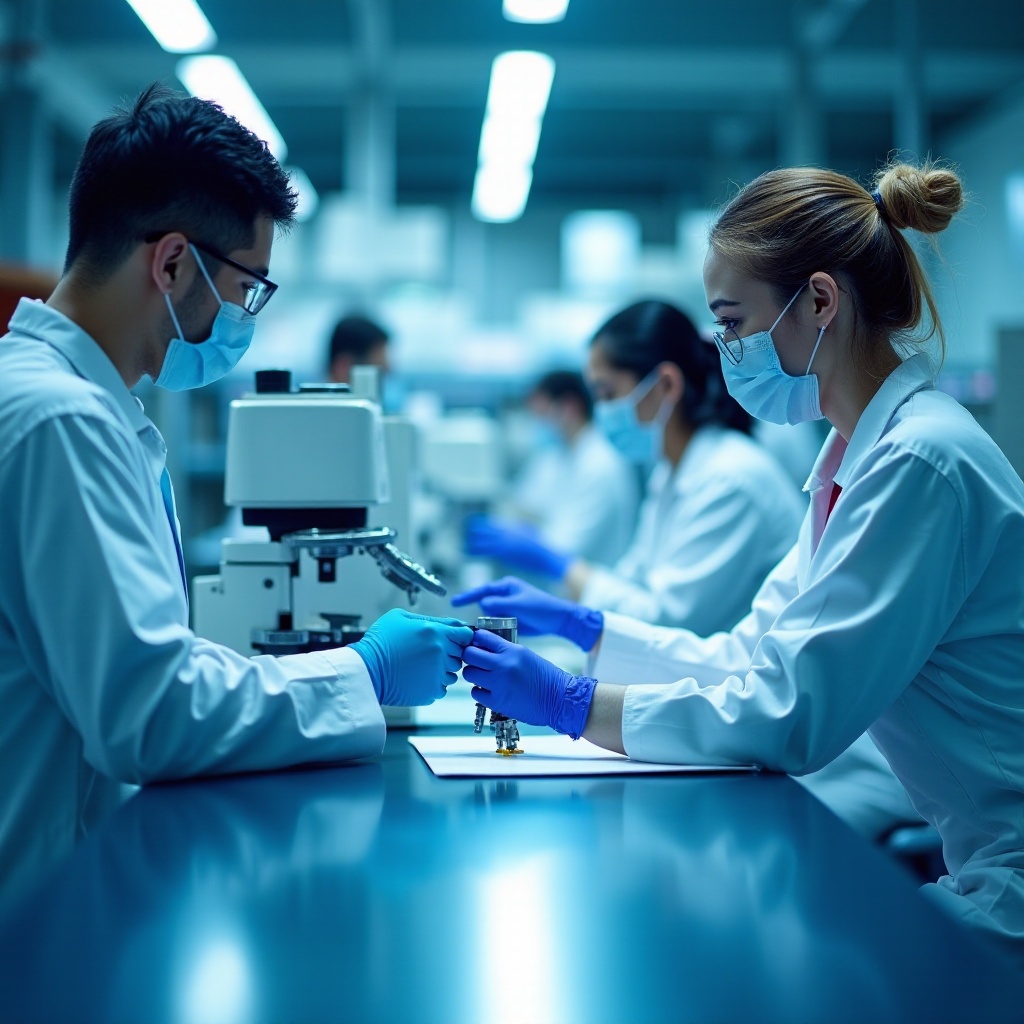Introduction
Cell and gene therapies are transforming the landscape of medical treatment by providing personalized solutions with promising outcomes. These therapies, while innovative, present significant challenges in their manufacturing processes. Understanding and addressing these challenges is critical for advancing this cutting-edge field, ensuring that therapies reach patients safely and effectively.

Understanding Cell and Gene Therapy Manufacturing
Manufacturing cell and gene therapies requires a series of complex steps. These therapies offer targeted treatments, addressing diseases at a molecular level. Cell therapy involves the administration of live cells directly to patients, while gene therapy focuses on altering genetic information to treat genetic disorders.
Integral processes such as cell modification, expansion, and preservation demand precision and control to ensure the safety and efficacy of the therapies. While parallels exist between the two, their distinct nature means they face different manufacturing challenges.

Major Manufacturing Challenges in 2024
Amid growing demand, manufacturers contend with challenges that threaten the scalability and quality of production.
-
Scalability and Production Bottlenecks: As the need for cell and gene therapies grows, manufacturers must overcome production bottlenecks. Traditional methods often lack the flexibility and scalability needed for large-scale operations. Overcoming these hurdles is essential to meet patient demands.
-
Quality Control and Consistency: Maintaining therapy consistency is crucial. Variability in production can compromise the safety and effectiveness of the therapies. Advanced quality control measures are necessary to uphold stringent standards.
-
Supply Chain and Raw Material Issues: Securing high-quality raw materials and managing supply chains are critical challenges, exacerbated by global disruptions. These supply chain issues can significantly delay production timelines.
Addressing Technological Limitations
Technology serves as a key ally in mitigating manufacturing challenges. The integration of advanced solutions can enhance operational efficiency and product quality.
-
Integration of Automation: Automation streamlines production by minimizing manual intervention, reducing errors, and increasing efficiency. This integration is pivotal for achieving scalable and consistent manufacturing processes.
-
Innovations in Bioreactor Technology: Enhanced bioreactor technologies offer controlled environments conducive to cell growth, improving both yield and quality. Such innovations are essential for boosting production efficiency and reducing costs.
Embracing technological advancements not only addresses immediate challenges but also lays the groundwork for improved therapeutic development in the future.
Regulatory and Compliance Challenges
Navigating the regulatory landscape is crucial for ensuring the safety and effectiveness of therapies. However, it presents a formidable challenge for manufacturers.
-
Navigating FDA and International Guidelines: Compliance with diverse national and international regulations can be daunting. Each regulatory authority has unique requirements, requiring flexible strategies to maintain compliance.
-
Impact of Recent Policy Changes: The rapid pace of biotechnological advancements has prompted shifts in regulatory standards. Staying informed and adapting to these changes is essential for maintaining compliance and securing product approvals.
Through proactive engagement with regulatory bodies and prioritizing compliance, manufacturers can streamline the approval process, enhancing safety and efficacy.
Collaborative Strategies for Overcoming Challenges
Collaboration can enhance the ability to tackle manufacturing challenges, harnessing joint knowledge and resources.
-
Industry-Academic Partnerships: Collaborations between industry and academia foster innovation, as academic institutions often lead in cutting-edge research. These partnerships facilitate access to novel technologies and methodologies.
-
Case Studies of Successful Innovations: Analyzing successful case studies elucidates how firms have scaled production or addressed supply chain challenges through strategic alliances, providing valuable insights for overcoming similar obstacles.
Strategic collaboration greatly amplifies the potential to address manufacturing challenges, accelerating advancements in cell and gene therapies.

Conclusion
While the journey to surmount cell and gene therapy manufacturing challenges is complex, prioritizing innovation, regulatory compliance, and strategic collaboration will be crucial. By addressing these challenges, we can unlock the full potential of these revolutionary therapies, delivering transformative care to patients worldwide.
Frequently Asked Questions
What are the primary challenges in manufacturing cell and gene therapies?
The main challenges include scalability issues, maintaining product quality and consistency, and navigating complex regulatory and supply chain landscapes.
How are new technologies addressing these manufacturing challenges?
New technologies, such as automation and advanced bioreactor systems, enhance manufacturing efficiency, consistency, and scalability, addressing significant production obstacles.
What role do regulatory bodies play in manufacturing challenges?
Regulatory bodies set the safety and efficacy standards for therapies. Navigating their guidelines is crucial for compliance, and policy changes necessitate continuous adaptation by manufacturers.
